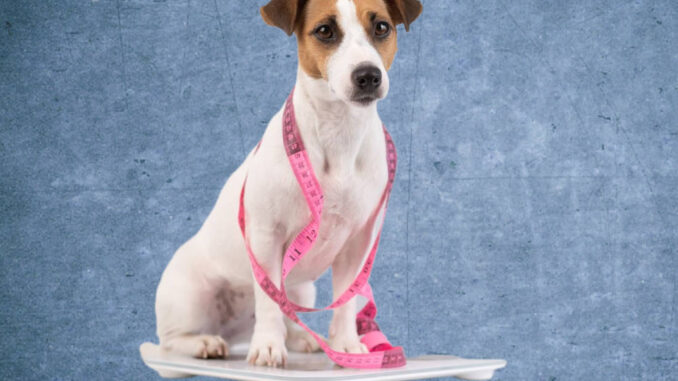
Recent data shows a concerning trend in the rising rate of obesity in dogs. Over the past few years, the number of overweight and obese dogs has been steadily increasing, with the Association for Pet Obesity Prevention (APOP) now reporting that up to 59% of dogs have excess weight.
Extra weight on a dog not only affects their quality of life but also burdens owners with expensive medical bills. Conditions such as diabetes, arthritis, and heart disease are just a few examples of health issues exacerbated and sometimes even caused by obesity in dogs.
More than 1/3 of dog owners don’t realize that their dogs have a weight problem
Shockingly, the research from APOP revealed that a significant portion of dog owners remain unaware of their dogs’ weight issues: 36% of owners perceived their pet’s body condition as “normal” when their veterinary professional classified it as BCS 6-9 (overweight to obesity). Often, owners only realize the severity of the situation when their vet points it out during a check-up.
“As a veterinarian in practice, I see examples of this every day. Owners are used to seeing fat dogs around them and in the media, and start to think that their appearance is normal. Too often, when a dog is the ideal weight an owner is concerned that they’re too skinny and wants to ‘fatten them up’. In reality, we want every dog to have a visible waist and we should be able to make out the outline of their last few ribs.”
Excess weight can result in costly health issues
Obesity in dogs can lead to severe health complications, as highlighted by Julie Burgess, our Certified Dog Trainer & Veterinary Technician. Burgess explains “Adding one extra pound to a dog is like adding ten pounds to a person. It makes their heart and joints work harder and can lead to more health issues.”
Dogs carrying excess weight are less able to cope with joint disease in older age, and are more prone to injuries including ruptured cruciate ligaments. While arthritis cannot always be avoided, maintaining a healthy weight is a great step in the right direction.
A leading cause of excess weight: owners love to spoil their dogs!
One of the primary causes of canine obesity is owners’ tendency to overindulge their pets out of love. This means that a lot of dogs get too many treats & too much human food (in addition to their own daily meals). Many owners use food as a means of comforting or bonding with their dogs, unknowingly contributing to their weight gain.
Additionally, a lack of understanding regarding proper feeding practices, such as using standard measuring cups for portion control, further exacerbates the issue.
Vet Linda Simon MVB MRCVS says ‘One thing I see time and time again is the feeding of daily dental sticks and chews, without consideration for the extra calories being given. Owners continue to feed full meals, not discounting the extra calories their dogs have eaten throughout the day’.
Quick tips for weight management
To combat obesity in dogs, owners can take proactive steps:
1. Know your dog’s ideal weight: consult with a veterinarian to determine the ideal weight for your dog and develop a tailored weight loss plan. Your vet should talk you through how to determine your dog’s Body Condition Score, which is a more accurate way of determining if your dog is a healthy weight, when compared to using weighing scales.
2. Measure how much you are feeding to your dog. Monitor food portions carefully. Measuring cups are helpful but leave space for inaccuracy. Studies have shown that weighing portions is the best way to maintain a healthy weight.
3. Use healthier treats: Opt for healthier treat options like carrot, apples, green beans or broccoli, and limit the frequency of treats.
4. Exercise your dog more: Increase daily exercise by extending walks or engaging in more active play sessions.
5. Be calorie aware: Owners should stop absentmindedly giving daily dental sticks and chews. When they are given, the dog’s food portion needs to be reduced for that day
6. Pay attention to guidelines: Both wet and dry dog food will have recommended portion sizes printed on the labels. These assume no other treats or food are being given throughout the day.
By implementing these strategies, owners can help their dogs achieve and maintain a healthy weight, thereby enhancing their overall well-being and longevity. Remember to discuss your situation with your veterinarian as the exact strategies will depend on the specific health profile of your dog.
Disclaimer: This website's content is not a substitute for veterinary care. Always consult with your veterinarian for healthcare decisions. Read More.


Be the first to comment